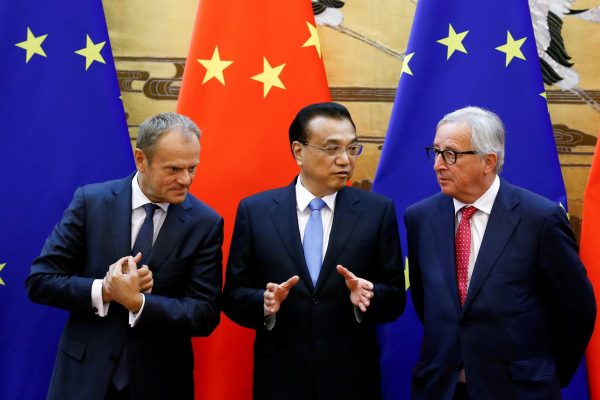At the bilateral level, the number of strategic partnerships between China and the CEE countries has increased — and now includes Serbia, Poland, the Czech Republic and Hungary. Local cooperation has also become a highlight. As of December 2017, China and the CEE countries had formed more than 60 friendly provinces and states and more than 100 pairs of sister cities. Since the launch of the ‘16+1 cooperation’, the number of direct flights between China and the CEE countries has increased significantly, in part to ferry the booming tourist flows that have increased by 146 per cent between 2011 and 2016. The CEE countries have also committed to further developing tourist facilities that are more suitable for Chinese tourists’ consumption habits.
On the business front, freight trains between China and Europe that only started running in 2011 had made over 9000 trips by the end of June 2018. Economic and trade cooperation has also progressed steadily. Since 2011, China’s trade with the CEE countries has grown at an average annual rate of 6.5 per cent, reaching US$68 billion in 2017. And the share of trade that China has with the European Union has increased from 9.3 to 11 per cent. China has also invested nearly US$10 billion in the CEE countries, and the CEE countries have invested more than US$1.4 billion in China.
Multilaterally, the 16+1 cooperation mechanism has driven a series of professional cooperation platforms. In September 2012, China set up the China–CEE Cooperation Secretariat under its Ministry of Foreign Affairs. As a coordinating institution for daily affairs, it has fostered bilateral and multilateral relationships between Chinese departments and CEE countries.
It is also worth noting that various associations between China and many CEE countries are defining a new type of cooperation. Slovenia is acting as coordinator in China–CEE forestry cooperation. Slovakia took the lead in the establishment of the China–CEE virtual technology transfer centre. And Poland established the China–CEE investment promotion agency and the China–CEE Business Council. These organisations show that the CEE countries can take the lead in cooperation issues within fields based on their industrial advantages and needs.
The 16+1 cooperation platform has also become an important avenue for China to promote the construction of the Belt and Road Initiative (BRI). China and the CEE countries have been actively working around the BRI’s ‘five types of connectivity’: that is, policy coordination, facilities connectivity, unimpeded trade, financial integration and people-to-people bonds. China sees the 16+1 cooperation as an important gateway to incorporate the ‘Belt and Road Initiative’ into the European economic community, a priority platform to step up China–EU ties, as well as a new engine to drive China–EU cooperation.
But not everyone sees it that way. The biggest challenge for China and the CEE countries to overcome is suspicion about China–CEE initiatives from the European Union, some CEE members and the United States. These suspicions reflect the lack of mutual trust, which will be difficult to overcome in a short period of time. In an effort to alleviate these concerns, China often invites EU representatives to participate in 16+1 summits, but the European Union only sends relatively low-level officials and openly worries that China–CEE cooperation aims to divide Europe.
This assessment is misguided. Rather, the 16+1 mechanism should be seen as an important part of and a useful supplement to China–EU cooperation. Chinese Premier Li Keqiang pointed out in his speech at the 8th China–CEE Countries Economic and Trade Forum that for CEE countries that have joined the European Union, the 16+1 cooperation will spur economic development, facilitating their faster integration into the European Union. For countries still wishing to join the European Union, the 16+1 cooperation helps them narrow the development gap, which is conducive to their early entry. The recent Bulgarian summit endorsed this view.
In the end, actions speak louder than words. The 16+1 cooperation should continue to work hard and do more practical things to prove that China is not aiming to divide Europe but instead wants to promote China–EU cooperation through the 16+1 cooperation.
Song Lilei is Associate Professor at the School of Politics and International Relations, Tongji University, Shanghai.

